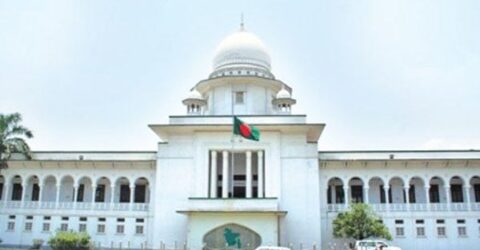Wari-Bateshwar : The second urban civilization of Indian subcontinent
The Bangladesh The Bangladesh
Today

Moshiur Rahman Selim, Narsingdi Correspondent
Wari and Bateshwar are two villages of Belabo upazila, about 30 km north of Narsingdi district town. The present name of the two villages situated about 3 km west of the Upazila Sadar is Wari-Bateshwar. Located side by side, the two villages, which are rich in Buddhist and religious culture of ancient Bengal, have been identified as Wari-Bateswara. At that time the Koyra River was to the north of the present village of Wari.
At present the dying river flows from east to west. An ancient earthen fortified city has been found on the banks of the old Brahmaputra River and Arial Khan river of Narsingdi along with Koyra river. It is better known as Asamrajara Garh, based on monetary evidence which is 2,300 years old. This means that the two and a half thousand year old Bengalis not only practiced agriculture but also built fortified cities.
The Indus Valley Civilization is the oldest civilization in the Indian subcontinent. It was the first urban civilization of the Indian subcontinent. This rich civilization has not been found since 1700 BC. Archaeologists have found no trace of Indus civilization in Bangladesh. However, a thousand years after the Indus Valley Civilization, in 600 BC, another urban civilization developed in the Ganges basin. This civilization is termed as the second urban civilization. So far, traces of a second urban civilization have been discovered at about 41 sites in the subcontinent. Among them Pundnagar aka Mahasthangarh and Wari-Bateshwar of Bangladesh are examples of second city civilization. This civilization had river ports.
Foreign and local merchants used to come to that trade center. These merchants used to enter the country through Koira, Old Brahmaputra and Arial Khan rivers. Trade and commerce passed through the Bay of Bengal through the Brahmaputra River. Unique brick-built architectural monuments, including forts, moats, paved roads and sidewalks, have been found here as evidence of ancient urban civilization.
The discovery of rolled pottery and sandwich glass beads established the Wari-Bateshwar trade relationship with the Mediterranean region. The newly formed Haitian bronze vessel speaks of Wari-Bateshwar’s trade relations with Southeast Asia.
The second urban civilization of the Indian subcontinent was destroyed and buried in the course of time. Later, in the Wari Bateshwar area, the soil was reversed for domestic purposes such as cultivating the land and digging holes. Due to land-cultivation, pond-digging, erosion of land surface due to rains, etc., antiquities were obtained by chance.
Workers excavate soil in the village of Wari in 1933 and find some coins in a container. A local school teacher named Muhammad Hanif Pathan collected 20-30 coins from there. These were the oldest silver coins of Bengal and India. That was the first attempt at archeological evidence of Wari-Bateshwar. He made his son Habibullah Pathan aware of this.
Sufi Mostafizur Rahman, Professor of Archeology at Jahangirnagar University, researched what was found after the excavation started. A team of archaeologists from Jahangirnagar University under his leadership has been conducting archeological research and excavations here for at least a decade and they claim that the ancient culture of Wari-Bateshwar is at least two and a half thousand years old. Professor Sufi Mostafizur Rahman admits to discovering 160 meters long road including alleys here.
Archaeological excavations of 2007-09 also uncovered a special brick architecture. Four walls are still standing 12 feet below the ground. Large bricks have been used in the clay masonry architecture. The brick floor was found intact. The discovery of terracotta tiles suggests that the roof of this architecture was covered by tiles. But its use was not known as there were no doors, windows or stairs to go down.
A square-shaped Buddhist monastery has been discovered at the Jankhartek site in Yoshar Union. Although the entrance to the monastery could not be identified as there is a modern house on the north side, 15 monks’ rooms have been identified in it. There are 177 monks’ rooms in Sompur Moha Bihara and 115 in Shalban Bihar. Mohabihara and Bihara are named after the monks’ chambers. This is the first time in the history of Bangladesh that a monastery and a monastery have been named. Carbon dates to the 6th century in the fourteenth date system.
The richness of Wari-Bateshwar, the road of limestone, the brick architecture, the fortifications all carry the identity of a rich civilization. At present, all the relics have been temporarily buried. But for antiquities-seekers like me, an open-air museum has been set up in the village of Wari. It is hoped that in the near future, this Shibpur Upazila of Narsingdi will become a paradise for pro-lovers.




